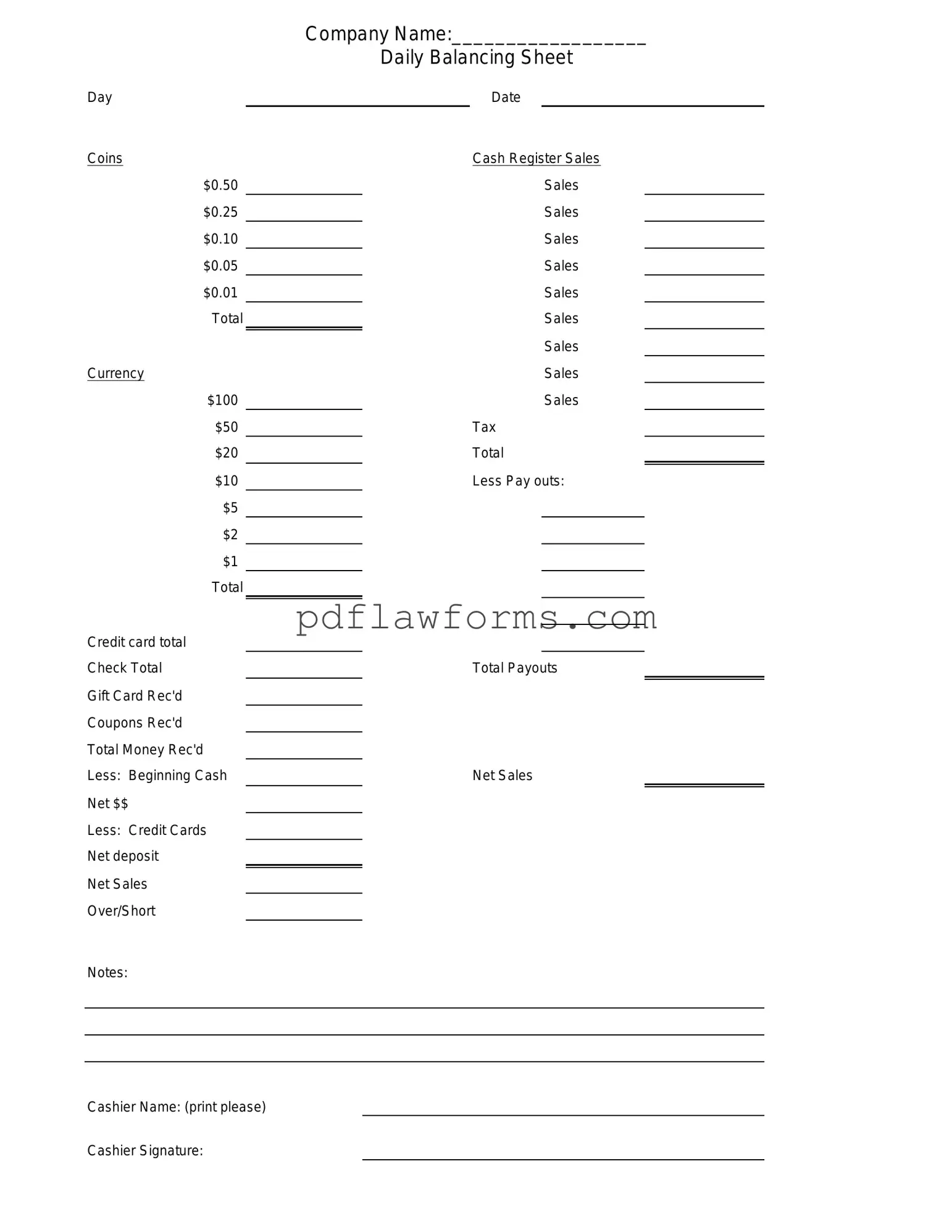Fill Your Cash Drawer Count Sheet Template
The Cash Drawer Count Sheet is a crucial document used by businesses to track the amount of cash in a register at the end of a shift or business day. This form helps ensure accuracy in cash handling and provides a clear record for financial accountability. To streamline your cash management process, consider filling out the form by clicking the button below.
Make My Document Online
